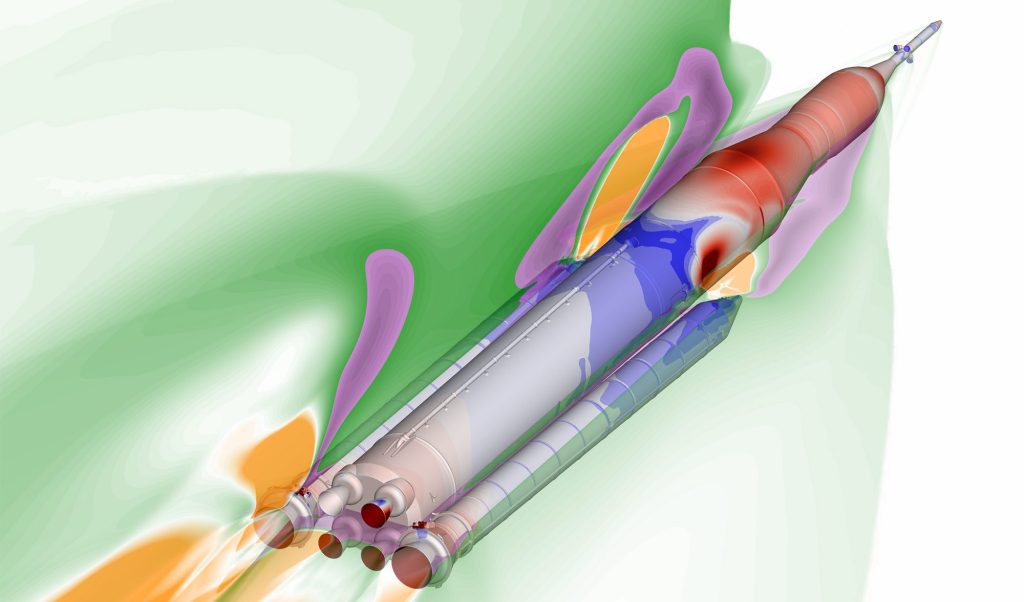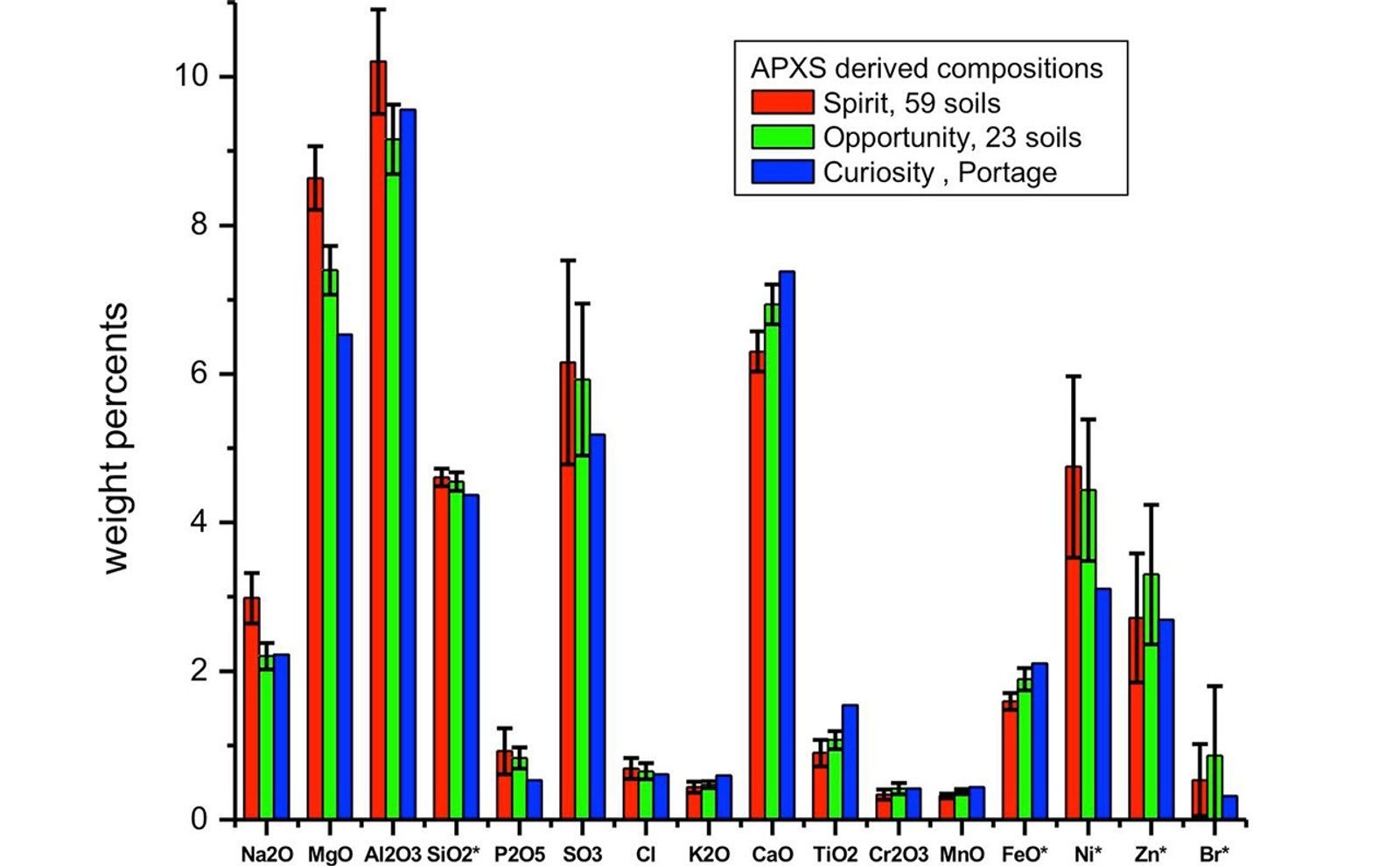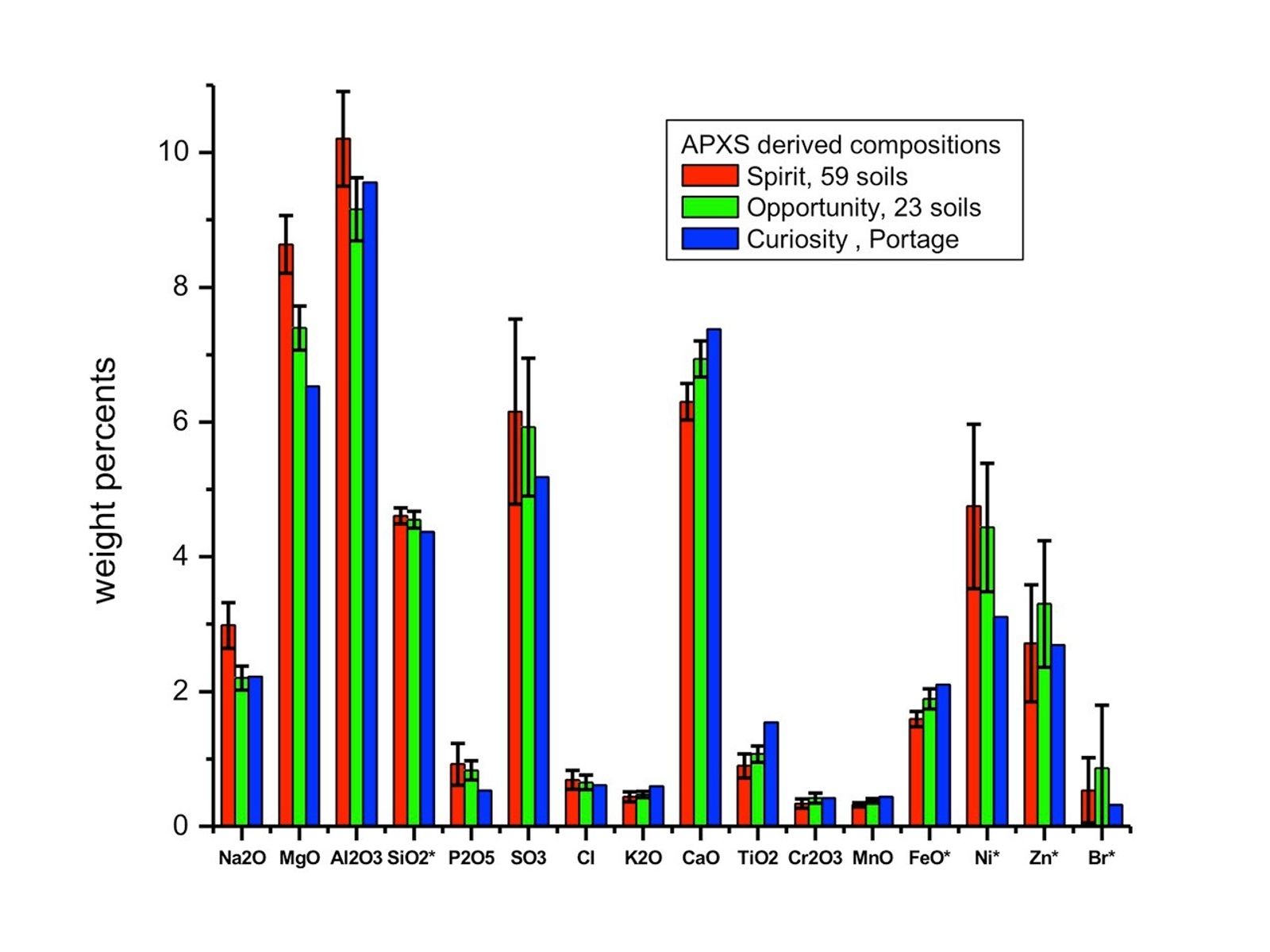Inspecting Soils Across Mars
| Credit | NASA/JPL-Caltech/University of Guelph |
|---|---|
| Language |
|
This graph compares the elemental composition of typical soils at three landing regions on Mars: Gusev Crater, where NASA's Mars Exploration Rover Spirit traveled; Meridiani Planum, where Mars Exploration Rover Opportunity still roams; and now Gale Crater, where NASA's newest Curiosity rover is currently investigating. The data from the Mars Exploration Rovers are from several batches of soil, while the Curiosity data are from soil taken inside a wheel scuff mark called "Portage" and examined with its Alpha Particle X-ray Spectrometer (APXS).
These early results indicate that the samples investigated by Curiosity are very similar to those at previous landing sites.
Error bars indicate the variations for the given number of soils measured for the Mars Exploration Rovers along the traverse. Note that concentrations of silicon dioxide and iron oxide were divided by 10, and nickel, zinc and bromine levels were multiplied by 100.



























